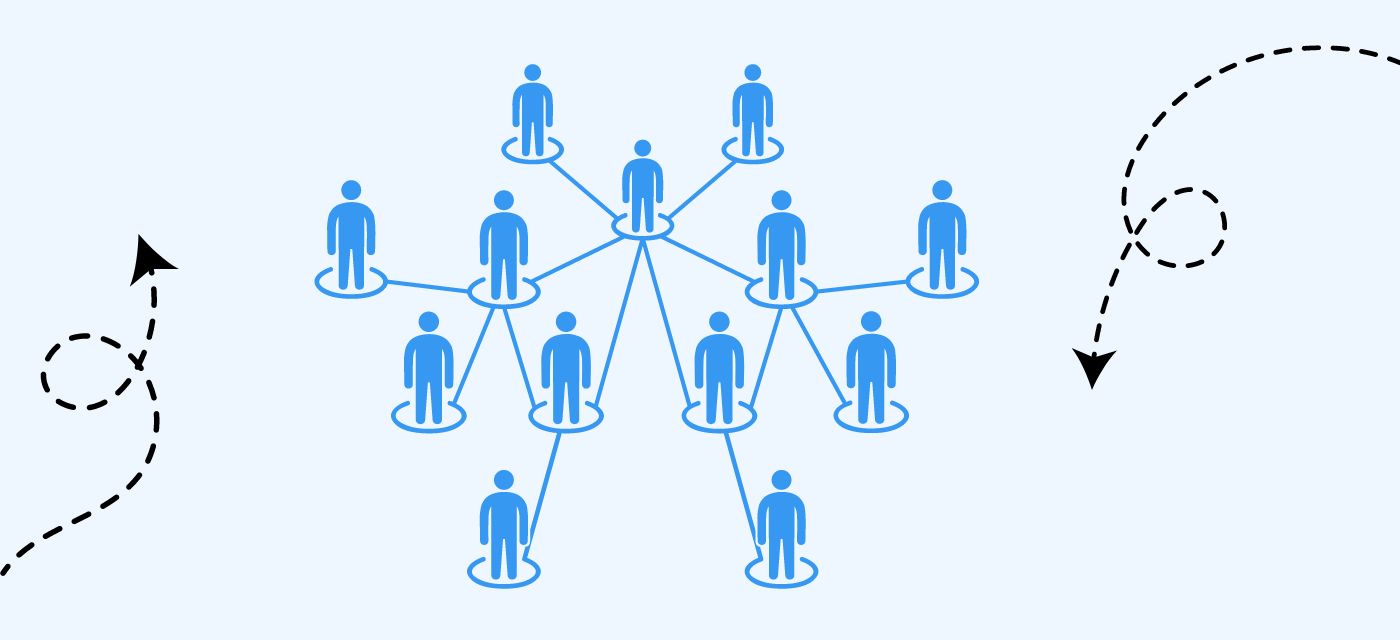Change is a given in today’s dynamic business environment. Whether it’s the advent of new technologies, shifting market trends, or regulatory updates, organisations are perpetually faced with the need to adapt and evolve.
But, as a work design enthusiast and someone deeply invested in helping companies navigate this fluid landscape, I believe that the true mettle of an organisation lies not just in its ability to change, but in the agility and resilience of its workforce.
Why do I say this? Consider this scenario: A tech firm has just rolled out a new software solution that dramatically alters the way teams function.
In one team, the employees grumble, resist, and struggle to adjust. Productivity dips, and morale follows suit.
In another team, the employees are open to learning, adapt quickly to the new system, and even find ways to leverage the technology to improve their output.
The difference? The latter team is agile and resilient. They have skills, tools and resources to support them through change.
In this post, I’ll delve into why it’s so critical for your employees to be adaptable, agile, resilient, and quick to react to change. I’ll also explore the business case for prioritising workforce agility, the risks and costs if you don’t, and how proper tooling, resourcing, and upskilling can foster agility within your organisation.
We’ll even examine tools and resources available to companies looking to create a more agile workforce, including work design methodologies and platforms like Beamible. So, whether you’re an HR leader, a manager, or just someone interested in how organisations can weather the storms of change, read on.
Causes of sudden organisational change
Organisational change is inevitable, and it often comes without warning. As we venture deeper into the 21st century, the pace of change only seems to be accelerating, driven by a handful of key factors.
Economic fluctuations
The economy is like a pendulum, constantly swinging between periods of growth and recession. When the economy thrives, businesses may expand, creating opportunities for new strategies and structures.
In contrast, a downturn often triggers cost-cutting measures, including restructuring and layoffs. In both scenarios, organisations have to swiftly adapt to remain viable.
Technological advancements
Few things have driven organisational change as dramatically as technology. From the rise of the internet to the advent of AI and machine learning, technological evolution perpetually shapes and reshapes the business landscape.
Companies must keep up or risk falling behind. This not only means adopting new tech, but also enabling your workforce to use it effectively.
Market competition
In a competitive market, staying still is moving backward. Competitors continually push the boundaries with innovative products, services, and strategies. To keep pace, organisations need to be ready to adapt their own strategies and operational tactics swiftly. This demands a workforce that can readily shift gears without losing momentum.
Regulatory changes
Last but not least, changes in laws and regulations can necessitate substantial organisational changes. Many of us would be familiar with the recent introduction of the Code of Practice for managing psychosocial hazards at work - a recent change that will impact the way we approach mental wellbeing.
Be it new data protection legislation, environmental regulations, or industry-specific guidelines, staying compliant often means changing the way your business and your workforce operate.
In the face of these change triggers, an organisation’s ability to respond swiftly and effectively can make the difference between thriving and merely surviving. And that response hinges largely on the agility and resilience of the workforce.
Which brings us to the question - what do we mean by workforce agility and resilience, and why are these traits so vital in today’s volatile work environment?
Let’s explore this in the next section.
The Importance of workforce agility and resilience
When I speak of an agile and resilient workforce, I’m talking about teams that can anticipate and respond quickly to changes, bounce back from setbacks, and adapt their skill sets to meet evolving business needs. They are flexible, durable, and primed for the unexpected.
But why are these traits so critical? Here are some compelling reasons:
Anticipation and quick response
Change is often accompanied by uncertainty and volatility. An agile workforce can foresee and respond rapidly to such changes. Whether it’s adjusting to a new software system or shifting strategies to address a sudden market disruption, swift action can prevent hiccups in operations and maintain business continuity.
Resilience amidst setbacks
Setbacks are a part of life - and certainly a part of business. A resilient workforce doesn’t just weather these storms; they learn, grow, and often emerge stronger from them. This resilience can keep morale high and maintain productivity even during challenging times - a critical requirement for businesses in a contracting market.
Adaptability to evolving business needs
The ability to learn new skills and adapt to different roles is invaluable. An agile workforce is continually learning and growing, ready to meet the evolving needs of the business.
But what happens if your workforce lacks these traits? In the absence of agility and resilience, change can lead to disruption, a decline in productivity, and ultimately, a negative impact on the bottom line. And that’s a cost few businesses can afford to bear, as we’ll discuss in the next section.
The business case for prioritising workforce agility (and prioritisation in general)
If your workforce is not agile and resilient, the risks and costs to your business can be significant.
Disruption and decline in productivity
Change often brings disruption, especially if a workforce is unprepared to handle it. This could lead to a decline in productivity as employees struggle to adapt to new processes, technologies, or organisational structures. If this state of disarray continues for an extended period, it can significantly hamper your business’s operational efficiency.
Increase in employee turnover
Employees who feel unsupported during times of change may become frustrated and seek employment elsewhere. This not only results in the loss of valuable talent but also incurs additional costs related to hiring and training new employees.
Potential damage to brand reputation
In an era where brand reputation heavily depends on employee satisfaction and customer experience, the consequences of an unprepared workforce could extend beyond internal disruption. If employees are unhappy, it can reflect poorly on your brand and may even lead to a decrease in customer satisfaction and loyalty.
With these substantial risks and potential costs in mind, it’s evident that prioritising workforce agility isn’t just an option; it’s a business imperative.
To achieve this, it’s essential to equip managers and employees with the right tools, resources, and upskilling methods. In the next section, I will discuss these in detail and share some recommendations, including the use of work design and platforms like Beamible.
Building workforce agility: tools, resources, and upskilling methods
Now that we understand the importance of an agile and resilient workforce, let’s explore how you can cultivate these attributes in your employees. The right combination of tooling, resourcing, and upskilling can help foster agility across an organisation.
Work Design
Work design is a strategic approach to crafting roles, responsibilities, and workflows that promote efficiency and employee satisfaction. It involves creating a work environment that fosters collaboration, communication, and flexibility.
By implementing effective work design, you can enable your employees to adapt quickly to changes and perform at their best, thus enhancing your organisation’s agility (amongst many other benefits!)
Beamible
One of the tools I can’t help but recommend is Beamible. Okay yes, we’re biased, but it’s also an innovative work design platform that is built to support agility within the workplace.
With Beamible, you can get visibility into the distribution of work and skills in a team or across an organisation, scenario plan and mobilise project teams quickly. It’s an excellent tool for empowering your employees and boosting their resilience to change.
Upskilling and reskilling
Training your employees to learn new skills or improve existing ones is another crucial strategy for building an agile workforce. By offering professional development opportunities, you can ensure your team members are ready to take on new roles or challenges that arise due to changes in the business environment. You can also equip them to handle more modern requests for things like flexible working, reducing heavy workloads, career mobility and more.
This can include in-house training, e-learning courses, workshops, or mentoring programs. But it’s important we note training alone isn’t going to cut it. You’re unlikely to have a successful leadership training (and have it stick) without first looking at organisational design, processes and psychosocial safety.
U.S. corporations spend enormous amounts of money—some $356 billion globally in 2015 alone—on employee training and education, but they aren’t getting a good return on their investment. People soon revert to old ways of doing things, and company performance doesn’t improve. To fix these problems, senior executives and their HR departments should change the way they think about learning and development: Because context is crucial, needed fixes in organizational design and managerial processes must come first.
Open communication channels and a psychosocially safe climate
Change can be unsettling for employees. Therefore, maintaining open lines of communication and taking care for the impact on employees is key to helping them navigate these changes. Regular updates, town hall meetings, and feedback sessions can go a long way in assuring employees that they’re supported and valued. Pulse checks on employee engagement to identify psychsocial safety hazards is also recommended.
…organizations need “fertile soil” in place before the “seeds” of training interventions can grow. When the researchers looked at a corporate training program aimed at improving problem solving and communication between managers and subordinates, they discovered that success varied across the company. Improvements were greater in units that had already developed a “psychologically safe” climate in which subordinates felt free to speak up.”
By investing in these tools and resources, you can build an agile and resilient workforce capable of tackling whatever change comes their way. In turn, your organisation will be better positioned to thrive in a constantly changing business environment.
Embracing change through workforce agility
Change is the only constant in the world of business, a fact that has become increasingly evident in recent years. Organisational shifts can be spurred by a variety of factors, from technological advancements to changes in the market landscape. And in the face of such change, employee agility, adaptability, and resilience aren’t just desirable traits—they’re non-negotiables.
By taking a proactive approach to change management, investing in tools like Beamible, and implementing effective work design, you can equip your employees with the skills and resources they need to quickly react to change. This investment not only mitigates the risks and costs associated with an unprepared workforce but also paves the way for continued growth and success in a dynamic business environment.
Ultimately, fostering workforce agility is about more than just staying afloat amid change—it’s about seizing the opportunities that change brings and using them to propel your organisation forward. By empowering your employees to adapt and thrive, you’re not just preparing for the future—you’re shaping it.





